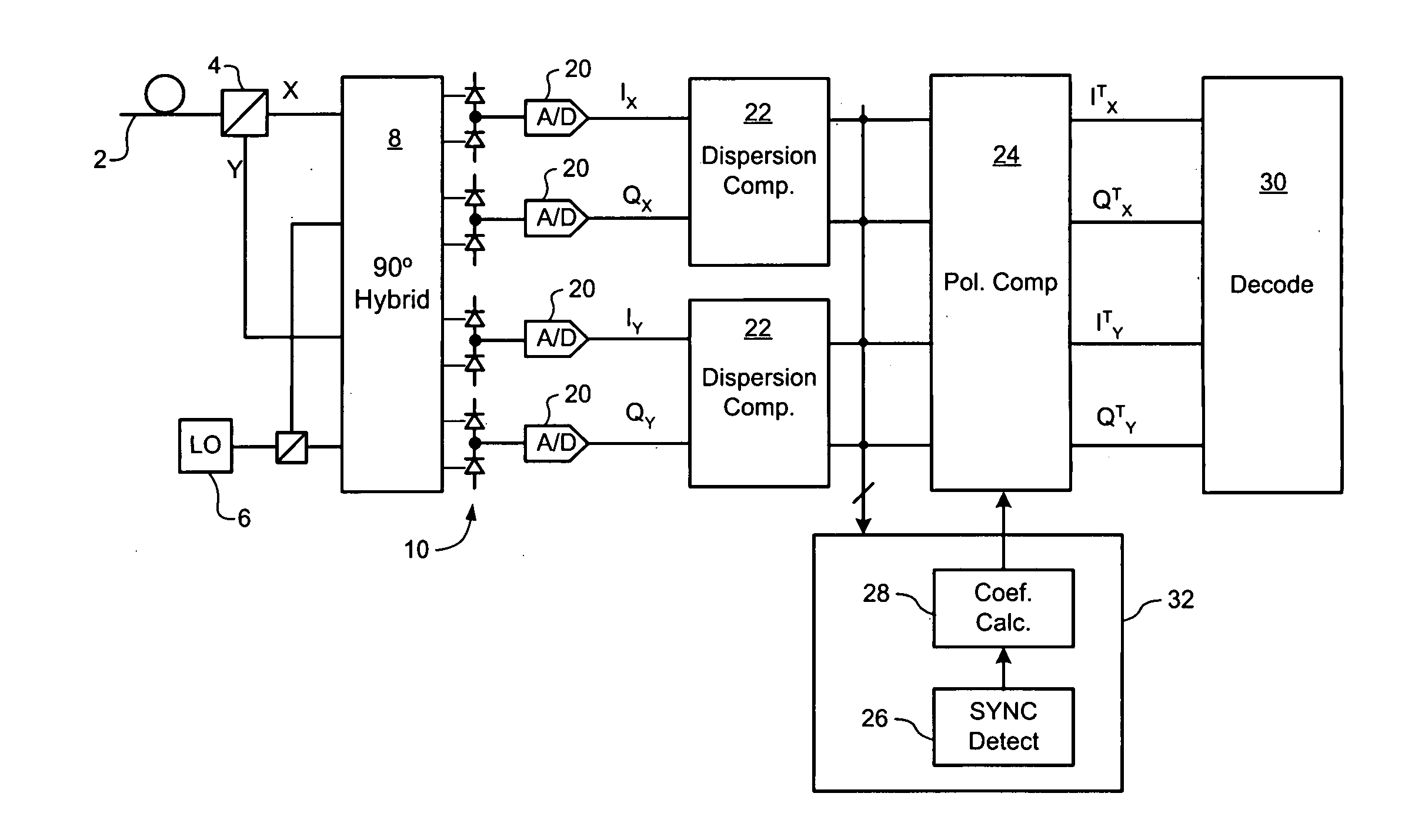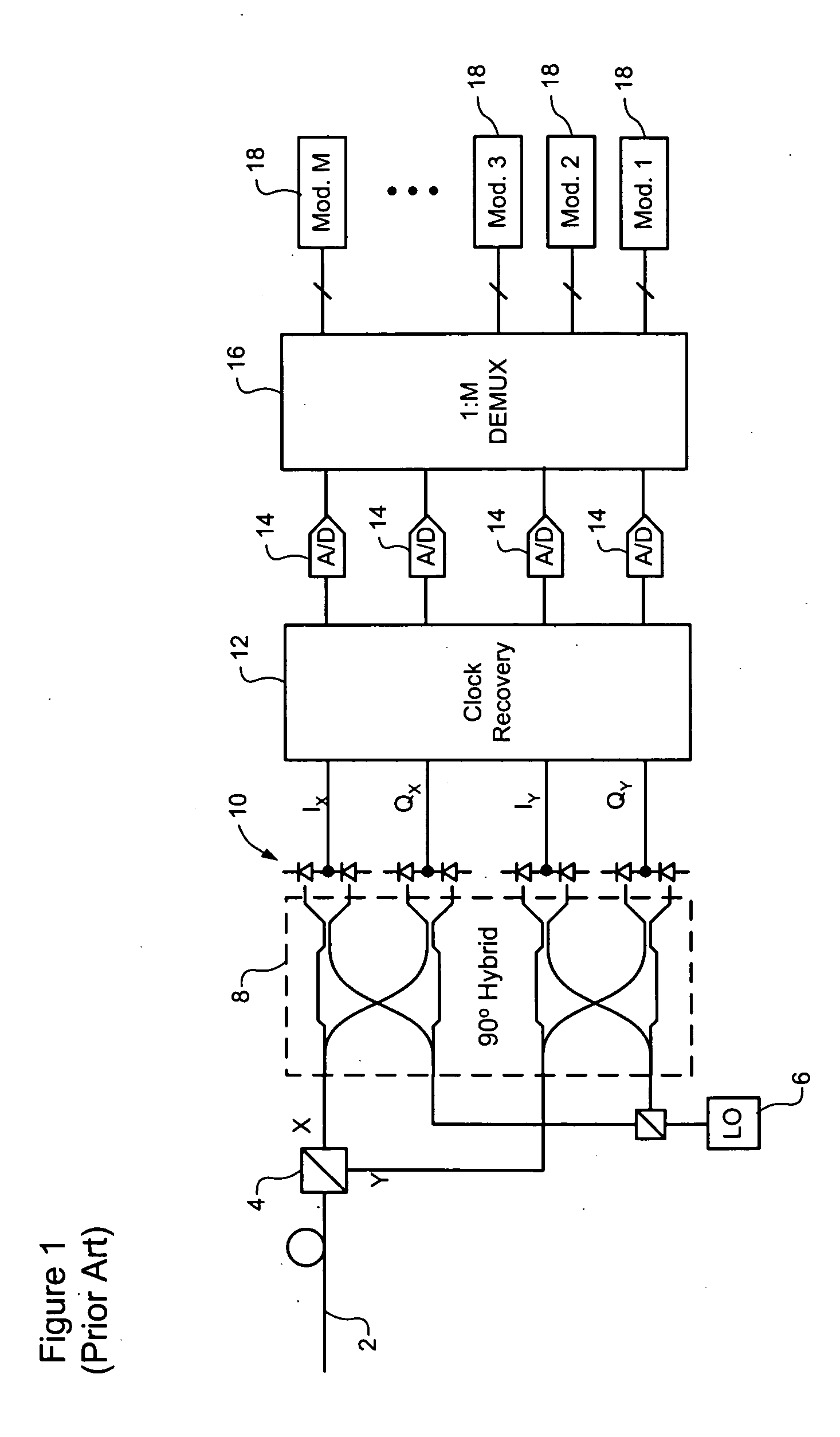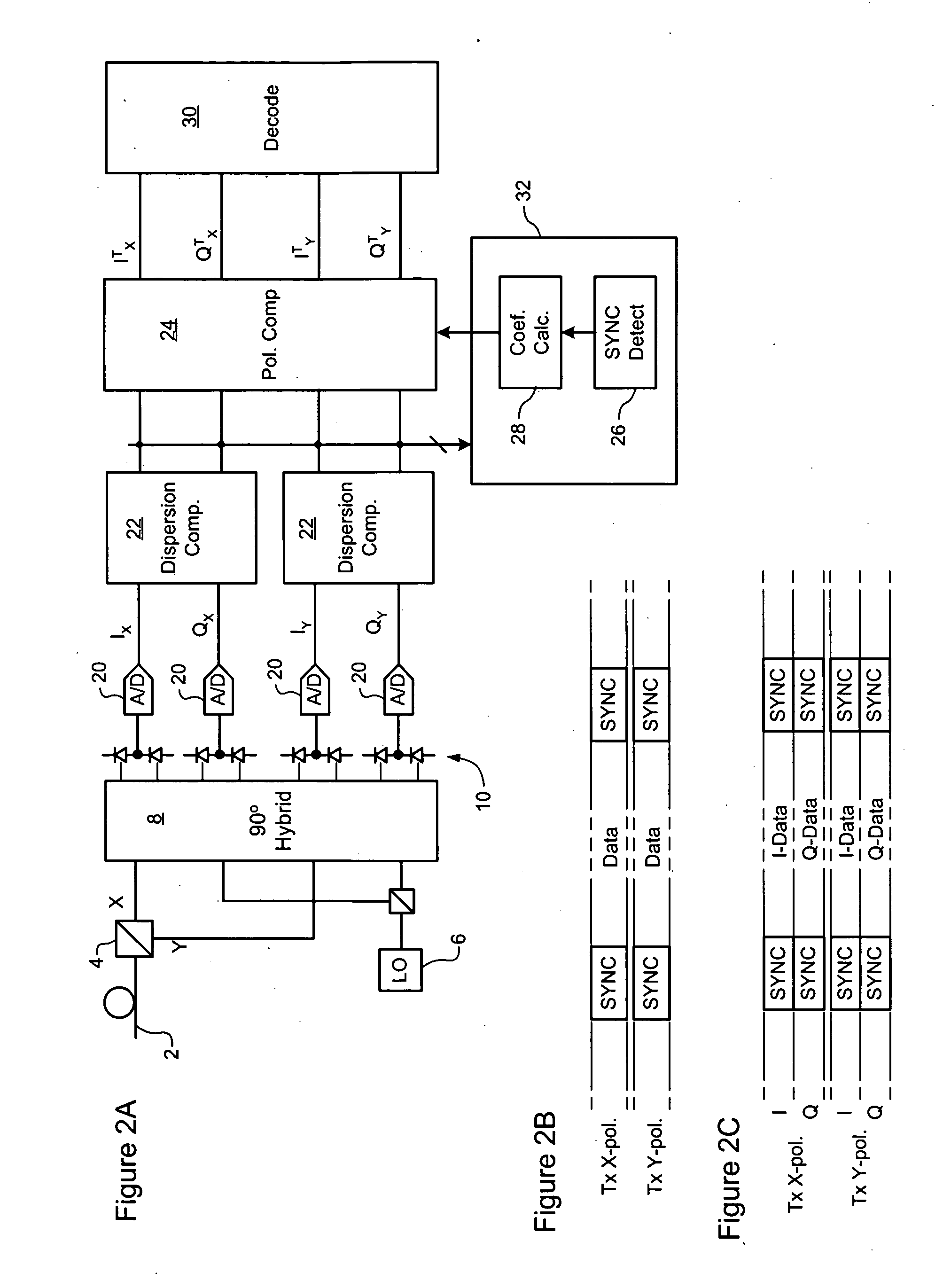Polarization compensation in a coherent optical receiver
a coherent optical receiver and polarization compensation technology, applied in the field of optical communication networks, can solve the problems of preventing successful deployment in “real-world” installed communications networks, distorted optical signals received through conventional optical links by significant amounts of chromatic dispersion (cd) and polarization dependent impairments
- Summary
- Abstract
- Description
- Claims
- Application Information
AI Technical Summary
Benefits of technology
Problems solved by technology
Method used
Image
Examples
Embodiment Construction
[0023] The present invention provides methods and systems enabling robust compensation of polarization dependent impairments, in the presence of severe dispersion. Embodiments of the invention are described below, by way of example only, with reference to FIGS. 2-4.
[0024] In general, the present invention operates by implementing separate training loops for training the dispersion and polarization compensation functions. In one embodiment, this is implemented by separating the dispersion and polarization compensation functions into discrete filter blocks cascaded within a common data path or pipeline, and then implementing a respective different training loop for training each filter block. In this embodiment, the digital sample stream generated by sampling the optical signal is first processed to compensate chromatic dispersion (CD). The dispersion compensated sample stream is then processed to compensate polarization dependent impairments. Separation of the dispersion and polariz...
PUM
 Login to View More
Login to View More Abstract
Description
Claims
Application Information
 Login to View More
Login to View More - R&D
- Intellectual Property
- Life Sciences
- Materials
- Tech Scout
- Unparalleled Data Quality
- Higher Quality Content
- 60% Fewer Hallucinations
Browse by: Latest US Patents, China's latest patents, Technical Efficacy Thesaurus, Application Domain, Technology Topic, Popular Technical Reports.
© 2025 PatSnap. All rights reserved.Legal|Privacy policy|Modern Slavery Act Transparency Statement|Sitemap|About US| Contact US: help@patsnap.com



